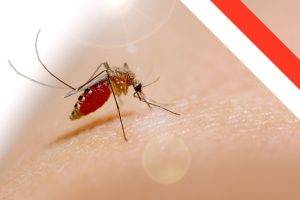Cystic fibrosis is a rare yet life-threatening disease that many may not be aware of. However, it is important to increase awareness of this disease so that it can be diagnosed and treated early to preserve quality of life.
A deep insight into cystic fibrosis
Cystic fibrosis is a genetic disorder that brings huge damage to the lungs, digestive system and other major organs of the body. This disease affects the cells of the human body that produce mucus, sweat and digestive juices, which are necessary for the normal functionality of the body. These secreted fluids are naturally thin and slippery, but people with cystic fibrosis have a defective gene that causes them to become thick and sticky.
When secretions become thick and sticky, they clog the tubes, ducts and passageways of lungs and pancreas while affecting the respiratory and digestive system to a point where it becomes life-threatening. The abnormal production of mucus in the lungs causes severe bacterial infections that causes coughing and wheezing. Over time, mucus buildup damages the lungs permanently by forming fibrosis and cysts.
Moreover, the thick and sticky mucus also invades the pancreas by blocking its ducts, which prevents the pancreas from producing insulin and aiding in proper digestion. As a result, the person may develop diabetes, as well as serious diarrhoea, weight loss and malnutrition.
Formerly, cystic fibrosis was treated as a fatal disease of childhood since children born with this condition couldn’t survive for long. Luckily, with progressive screening and treatments, it has now become possible for patients to survive for a longer period of time. However, both adult men and women with cystic fibrosis are likely to experience infertility issues and other health problems.
Which gene is responsible for causing cystic fibrosis?
As mentioned before, cystic fibrosis is a genetic disorder. It is caused by a mutation in a gene known as the Cystic Fibrosis Transmembrane Conductance Regulator (CFTR). This specific gene regulates the normal flow of salt and secretions in and out of the body’s cells. When this gene doesn’t work normally, it causes a sticky mucus accumulation in the body.
A person who inherits the mutated copy of this gene from both parents will have cystic fibrosis. On the contrary, an individual who carries only one copy of the mutated gene will not have this disease. However, he/she still might be a carrier of this disorder, which may affect his/her children.
Symptoms of cystic fibrosis
The symptoms of this disorder are not similar for everyone. Rather, it changes from an individual to an individual. A person might have only a few signs that can get increasingly severe over time.
If newborn screening is performed, cystic fibrosis is diagnosable even in the first month before symptoms present themselves. People who do not undergo initial screening may not be diagnosed with this disorder until the symptoms start appearing in later part of life.
As far as childhood symptoms are concerned, parents may observe that their child’s skin tastes salty or the child cannot pass stools. This is because individuals with cystic fibrosis tend to have an imbalance of salt and sweat in their bodies.
Other symptoms largely appear in the respiratory and digestive systems. They include:
- Stubborn cough along with thick mucus
- Wheezing sounds when breathing
- Inability to remain physically active
- Recurrent bacterial infections in the lungs and sinusitis
- Stunted growth
- Abnormal stools
- Intestinal blockage
- Severe constipation
Ways to detect cystic fibrosis
There are three easy ways to detect: a blood test, DNA test and sweat test. The blood test intends to check for the level of immune-reactive trypsinogen, which is largely increased in individuals with cystic fibrosis. The DNA test looks for mutations that occurred in the CFTR gene while the sweat test measures the level of salt content in the individual’s sweat.
Is cystic fibrosis treatable?
Unfortunately, there is no permanent cure, but certain treatments can be used to ease pain.
Medications
Antibiotics are prescribed to open clogged airways and treat bacterial infections. These medications will help a person’s lungs function better. These antibiotics can either be pills or inhalers. Also, CFTR modulators are given to aid the lungs and encourage proper growth of the patient.
Airway clearance methods
Apart from medications, some airway clearance methods can be used to get rid of heavy and sticky mucus. An oscillating device can be used, which uses vibration to loosen the mucus in the airway. That way, the mucus can be coughed out more easily. In addition, some physical therapies are helpful in getting rid of mucus and preventing airway blockage.
Living with cystic fibrosis
Cystic fibrosis can be managed such that one can live with the condition. Working closely with doctors and specialised therapists is very important. A thorough checkup every three months is advised. If severe symptoms are occurring, make sure to contact your doctors in between checkups as well.
Also, you can make practical lifestyle changes for living well with cystic fibrosis. This includes following a nutritious diet full of fruits, vegetables and whole grains, avoiding tobacco consumption, washing hands frequently to avoid the risk of any infection, exercising regularly, drinking a lot of fluids, and practising chest physical therapy as recommended by your doctor.
Conclusion
With advanced treatments and personal care, people with cystic fibrosis now have a longer life expectancy than in the past. Children can go to school regularly and adults can have a normal marital and sexual life. If you plan to have a baby, you can also talk to your doctor to address and treat infertility issues with the help of modern fertility plans.












